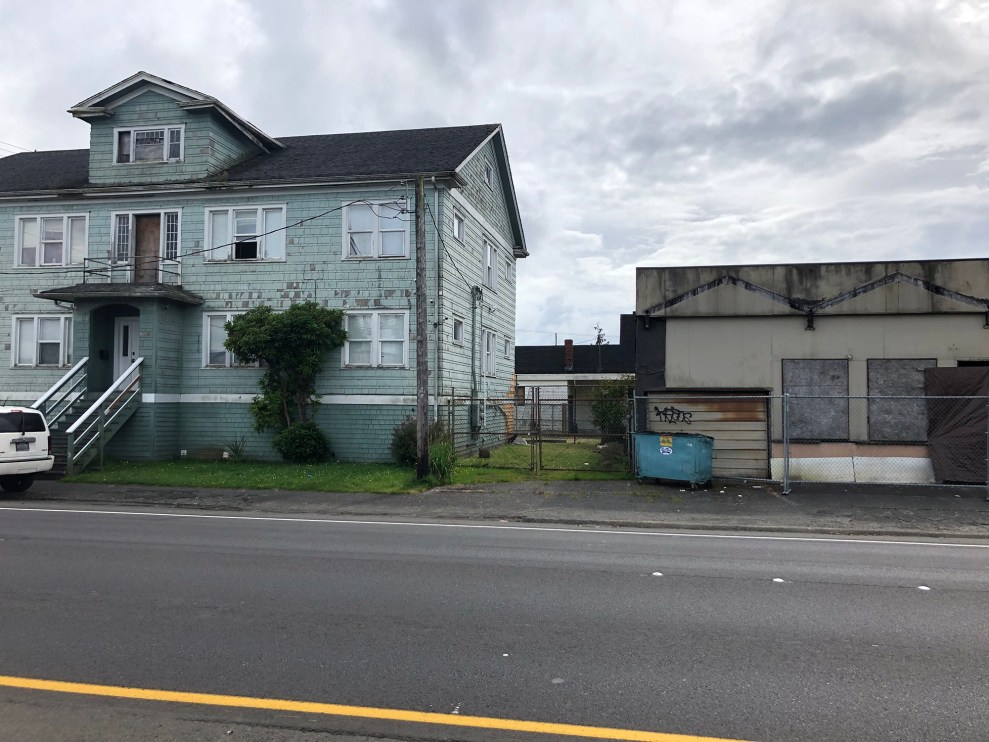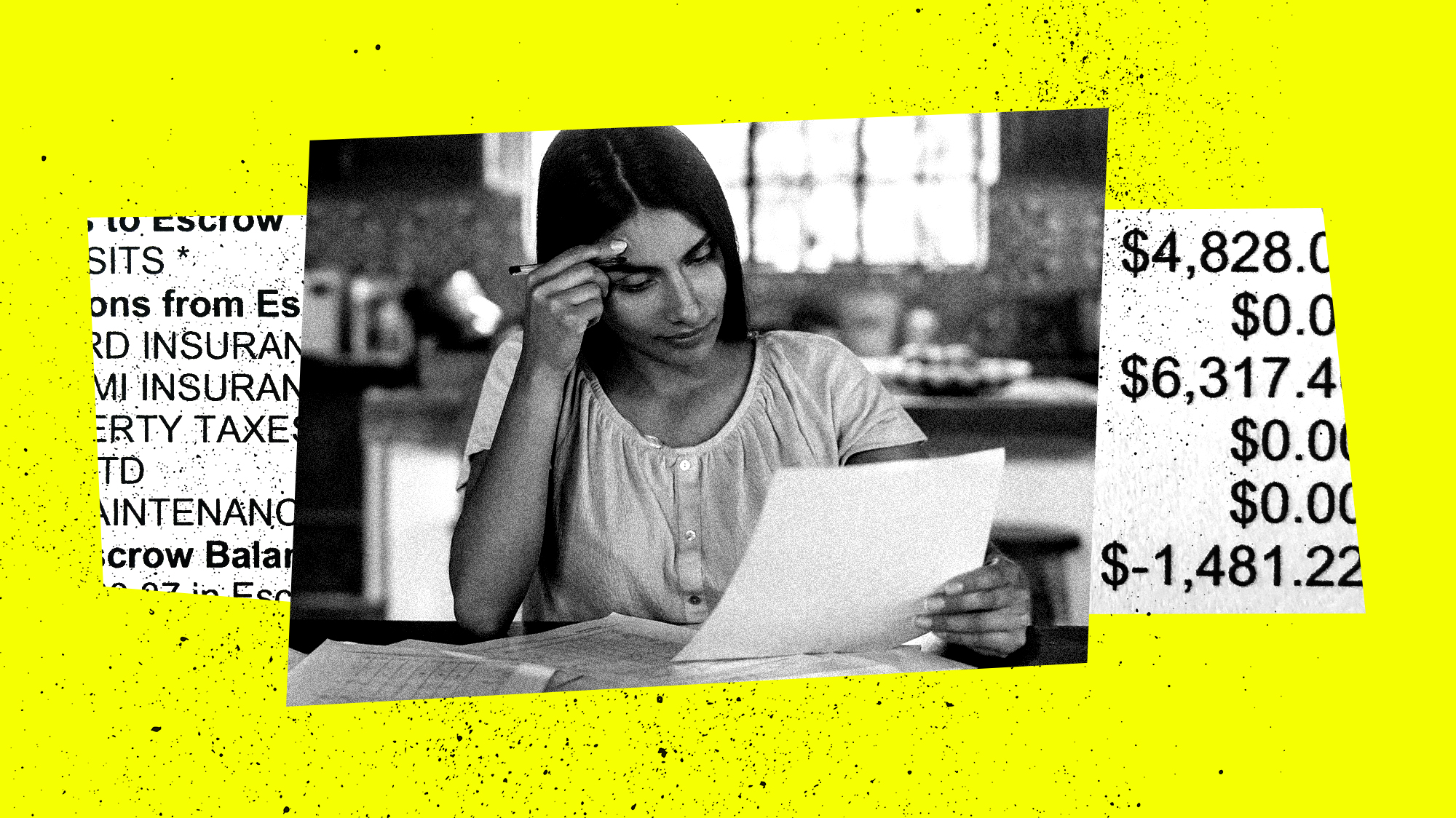This story was published in partnership with the Center for Public Integrity.
As she opened her $1,600 property tax bill in February, Edith Baltazar suddenly lost her appetite for the eggs she’d prepared for lunch with her daughter. Her thoughts raced: Would their home be taken away if she couldn’t pay it?
Baltazar’s daughter wept. The family would have to make a difficult decision: the property tax or $2,000 for diabetes medication.
The taxes won.
“Sometimes you have to choose—pay your property taxes instead of paying your water bill and everything else,” said Baltazar, recalling the stressful experience in a July interview.
The lowest-earning residents in Washington state, where Baltazar lives, pay almost 18 percent of their annual incomes in state and local taxes, while the wealthiest chip in 3 percent.
All but a handful of states make poor residents contribute a greater share of their income to taxes than wealthy people do. Economists call that upside-down approach “regressive.” Nationwide, the share the lowest-income earners pay to state and local taxes is 54 percent higher than what the top earners pay, according to the Institute on Taxation and Economic Policy.
And those policies hit communities of color the hardest.
Undocumented immigrants contribute billions of dollars in state and local taxes, according to estimates by ITEP and other groups, but aren’t eligible for many tax-funded services or tax rebates. Studies show assessors tend to inflate property tax assessments of low-priced properties, disproportionately owned by Black and Latino people. The higher tax bills increase the odds of what Baltazar feared—losing your home.

All this means state and local tax systems that could help address America’s widening economic inequality are instead making the problem worse.
The federal system also increases inequality, with legal loopholes giving very high-net-worth people massive tax breaks. But the Internal Revenue Service doesn’t force low-income residents to shoulder the biggest relative burden. Most states do.
“We’re asking people to fund government programs even when they can’t afford basic needs, like food and shelter,” Ariel Jurow Kleiman, an associate professor at Loyola Law School in Los Angeles who focuses on tax law and policy, said via email. “That strikes me as profoundly unfair.”
A key reason: sales and other consumption taxes. Unlike the federal government, almost all states collect them. Spend $50 on clothes for your kid, and you’ll pay the same sales tax as anyone else in your area, regardless of income. The poorer you are, the greater the share of your resources the sales tax gobbles up.
Income tax is the main tool states have to counteract that. But some choose to tax everyone at the same rate, rather than following the federal model of increasing up the income scale.
And some states, like Washington, don’t tax income at all. These places lean especially heavily on sales tax and other revenue options that make lower-income people contribute more.
How a state chooses to collect money impacts not only who pays more but also how much revenue it generates to fund public services. Poor people handing over a higher percentage of their income in taxes and fees to fund state and local services often end up with less in return. That’s often the case with school funding.
In a 2018 study, ITEP found that tax structures vary widely even in states with similar costs of living and demographic makeup. The organization ranked Washington state as having the most regressive tax system in the nation, for instance, while judging neighboring Oregon’s system as one of the most equitable.
With no state income tax, Washington’s average state and local sales taxes of more than 9 percent are among the nation’s highest. This is what Baltazar faces every day. When the time came to pay the first installment of her property taxes, there was no flexibility left in the family’s budget.
Baltazar, her husband Rafael, and adult daughter Kary had all lost their full-time jobs and couldn’t get unemployment benefits. Her husband, who found occasional work on a farm, went without insulin for three months so they could pay the property tax. They relied on home remedies such as hibiscus tea as well as a small supply of the diabetes pill metformin to manage his Type 2 diabetes instead. He developed a painful stomach ulcer that caused him to stop working altogether.
There’s no mystery about how states can make their tax systems more equitable, policy analysts say.
“A progressive income tax with multiple rates that go up the higher the income is very boring and it’s not new, but it’s really the only way,” said Richard Auxier, a senior policy associate with the Urban-Brookings Tax Policy Center.
But making that change won’t be easy. Some states have gone to extra lengths to ensure efforts to tax poor people less and rich people more end in failure.
Some of the most regressive state tax policies today originated during the Reconstruction era that followed the Civil War when Southern state governments had to start building schools and providing other government-funded services to formerly enslaved people.
Tax rates nearly doubled in the South between 1860 and 1870. According to a 2019 National Bureau of Economic Research paper, white Southerners violently resisted changes to the tax code that could redistribute wealth built from slavery, organizing to intimidate Black politicians. Larger tax revenues in areas “were strongly correlated with an increased likelihood of a violent attack against black policymakers,” economics scholar Trevon D. Logan found.
Ultimately this led to the adoption of tax policies that favored whites. In 1890, Mississippi adopted a new constitution with a provision to require three-fifths majority votes to pass most tax increases, guaranteeing that white legislators could block such changes even if they were in the minority. In 1901, Alabama adopted a new constitution with caps on property taxes, which limited the amount of money white homeowners would have to contribute to fund Black public schools.
One of the Mississippi delegates, Marye Dabney, wrote a few years later that the major goal of the 1890 constitution was to “effectually remove from the sphere of politics in the State the ignorant and unpatriotic negro.”
State tax code can’t be divorced from the “racist, sexist, classist” laws and practices that prevent large groups of people from building wealth, said Andy Nicholas, senior fellow at the Washington State Budget & Policy Center.
When Washington state was still a territory in 1864, the government levied a tax on Chinese adults to deter migrant workers from settling in the area. That was repealed five years later.
In the early 1930s, a coalition of urban workers and rural farmers in the state helped pass a ballot initiative to reduce property taxes and create a personal income tax with rates increasing up the income scale. The Washington Supreme Court threw it out in 1933, saying it violated the state’s constitution.
“It definitely took away a tool that could have been there, and it forced lawmakers to rely on consumption taxes,” said Nicholas. The state’s tax system hasn’t changed much since.
At the other end of the continuum is Oregon, which has an income tax with rates that rise as earnings do and is one of five states without a sales tax.
Whenever he gives talks on tax policy, Juan Carlos Ordóñez at the Oregon Center for Public Policy points to his neighboring state as an example of what not to do.
The “situation in Washington is diametrically opposed and much worse for low-income folks,” he said.
Still, Ordóñez said, Oregon’s tax structure is considered only “mildly progressive.”
Oregon has a tax rebate known as “the kicker,” approved by voters in 1980 to kick money back to taxpayers when revenue tops projections by at least 2 percent. This year, the richest 1 percent of residents received a $17,000 rebate. The lowest-earning 20 percent of Oregonians averaged $30.
An anti-tax movement prompted overhauls of the state’s system in the 1990s, capping property taxes and making it harder to pass bills for raising revenue.
The state’s wave of tax provisions that largely benefit people with more means—disproportionately white—were part of a nationwide trend that gained steam beginning in the 1970s.
“After the victories of the civil rights movement, there’s this backlash to the public sector that’s motivated, certainly in part, by racism,” Ordóñez said. “We’re sort of stuck with suffering the consequences of those decisions and the misguided policy that sees public investments in a very detrimental way.”
Ballot measures and legislative action aren’t the only explanations for regressive systems. Courts play a role, too.
In Pennsylvania, judges have consistently interpreted the 1870s uniformity clause in the state’s constitution, that “all taxes shall be uniform, upon the same class of subjects,” in a narrow way that saves wealthier people money at low-income taxpayers’ expense.
The clause was a reaction to legislative favoritism of railroads and big businesses in the 19th century. But it ultimately stopped the state from creating a graduated income tax like the federal government. Instead, Pennsylvania has a flat rate, said Frances Beckley, an educator at Temple University law school’s Center for Tax Law and Public Policy. It also taxes commercial real estate at the same level as residential.
Forty-eight states have uniformity clauses in their constitutions regarding state and local taxes, according to The Pew Charitable Trusts. Few are bound by court decisions like Pennsylvania’s.
“Those legal interpretations which do not flow necessarily from the language of the Constitution, but are now very well established in Pennsylvania law, put real limits on doing anything progressive in terms of taxes,” Beckley said.
The federal government used to rely on customs duties, a cousin of sales tax. The Sixteenth Amendment in 1913 added income taxes, at first only on the wealthiest people. When the country needed more money to fund war efforts, it increased those rates on high earners.
“Part of the reason the federal tax system got so progressive was a historical accident of the income tax coming in at the right time,” said Lawrence Zelenak, a professor at Duke University School of Law.
In 2005, then President George W. Bush tapped experts to recommend federal tax code reforms. One change they advised against: replacing the income tax with a federal sales tax. The burden, the panel concluded, would fall on lower and middle-income Americans the most.
Total federal taxes for a lower-income single mother with one child would increase more than eightfold from $723 to $6,186 under such a system, the U.S. Department of Treasury estimated at the time. A national sales tax policy was never adopted.
But by then, nearly all states relied on sales taxes.
The first, Mississippi, adopted it amid the mass unemployment of the Great Depression. Mississippi Gov. Mike Conner, who was later described in a Time magazine article as “solidly foursquare for white supremacy,” wanted to turn around a huge budget deficit while also reducing property taxes.
The beneficiaries—property owners—were overwhelmingly white. Overall taxes increased for Black families, who were less likely to own property.
Louisiana, which created its first sales tax several years later in 1938, today has the nation’s highest combined state and local sales tax rate at 9.55 percent, according to the Tax Foundation. Its poverty rate, meanwhile, is 50 percent higher than the national average.
The state’s heavy reliance on sales tax revenue exacerbates the wealth gap between white and Black families, according to a 2021 report by the Louisiana Budget Project that used ITEP data. Mostly because of sales tax, Black households there pay the highest share of income on taxes, while white households pay the lowest, the study found.
“Make no mistake, Louisiana’s lower-income communities and communities of color are subsidizing lower taxes for rich households and corporations through our high sales tax rates,” said Neva Butkus, state policy analyst at ITEP.
The difficulties that high sales taxes cause low-income families aren’t just financial. A mother in Alabama was recently reported to the state’s Department of Human Resources, which includes Child Protective Services, for not sending diapers to daycare when she couldn’t afford them, said Lindsay Gray, executive director of nonprofit diaper bank Bundles of Hope in Birmingham.
Birmingham’s combined state and local sales taxes are even higher than Louisiana’s average. People who aren’t financially strapped might think the nearly $5 of sales tax on top of $50 of diapers isn’t much, “but it really impacts a family in a huge way,” Gray said.
“When families literally have $0, that $5 over and over again really adds up and really can be devastating,” she said. “Every single quarter and dollar counts when families live in poverty.”
Delaware, one of the few states without sales tax, manages it by collecting an unusually high share of its revenue from fees associated with headquartering a company in the state. That’s driven by its reputation as an especially business-friendly tax haven.
It makes Delaware a rarity with mildly progressive taxes overall but at the expense of other states’ revenue. The companies that would otherwise have paid them corporate taxes get to avoid it with a Delaware address.
The state, meanwhile, has lowered income taxes on top earners over time. Its top rate is half as high as its pre-1985 level. And it starts taxing low-income residents once they cross the $2,000 threshold, much lower than where federal taxes kick in.
State Rep. John Kowalko said his efforts to increase the rate for the wealthiest residents and lower taxes on the poorest died in committee, victims of a political ideology that favors low taxes and minimal scrutiny of corporate behavior as a means of encouraging businesses to set up shop in the state.
“They’d say, ‘You have this many businesses in your district,’” Kowalko said of those arguing against changing the state’s tax structure. “They also conveniently leave out, ‘You also have 20,000 people that pay your taxes at an unfair rate.’”
State and local governments have two main tools to make taxes more equitable, said Loyola Law School’s Jurow Kleiman: reducing the taxes low-income people pay through more progressive income tax structures and transferring money through programs and rebates, such as state versions of the federal Earned Income Tax Credit.
“It’s all part of the higher cost of being poor,” Jurow Kleiman said of taxation that hits low-income people harder. “But in the case of taxes, it’s a cost imposed consciously and intentionally by governments, which in theory means there’s something we can do about it relatively easily.”
Thirty-four states as well as Washington, DC, and Puerto Rico have such tax credits, though most are small. Some are nonrefundable, meaning that people can’t get back more than what they owe in taxes. Jurow Kleiman said refundable credits are more equitable policies because they can act as cash transfers to households that are too poor to owe high-income taxes.
Many rebates also include carve-outs that limit eligibility, Jurow Kleiman said. Some programs are only for seniors or don’t allow childless workers to participate.
While undocumented immigrants are ineligible to receive federal Earned Income Tax Credits, several states, including California, Colorado, and Maine, have expanded their tax credits to include eligible workers regardless of immigration status.
Washington, DC, followed suit this year and is expanding its credit to match the federal amount by the tax year 2026, something no state has done. Officials funded that—and other budget items to help lower-income residents—by changing income tax rates and brackets last year. Now top earners pay a greater portion of their income than the rest of the district instead of the other way around, the DC Fiscal Policy Institute says.
“I will just note that [this] enhances racial equity in our tax code as well, because households at the high end of the income spectrum, folks in that top 20 percent, are disproportionately white,” said Erica Williams, the institute’s executive director. “Folks who are in the bottom 20 to 40 percent are disproportionately Black and brown folks.”
Top leaders in some states acknowledge their tax rules are regressive. Washington Gov. Jay Inslee “has reminded people of this fact while advancing policies to make our system more balanced,” spokesperson Mike Faulk said in an email.
Beginning next February, more than 400,000 Washingtonians will be eligible to apply for a new Working Families Tax Credit worth up to $1,200.
And last year, the state enacted a 7 percent tax on the exchange or sale of capital assets such as stocks and bonds on profits exceeding $250,000. The revenue will go toward funding childcare and early learning—if it survives an ongoing legal fight.
But some states are going the other direction, approving tax changes likely to shift more of the burden onto lower-income earners.
So far this year, at least 10 states cut their personal income tax rates, largely in ways that benefit upper-income people, according to the National Conference of State Legislatures. Some of these states also lowered their corporate tax rates.
Idaho, for example, reduced the tax rate on its highest-income bracket. South Carolina did the same while promising additional cuts to the top rate should the state meet revenue targets.
Georgia, Iowa, and Mississippi went a step further, replacing their graduated income tax brackets with a flat tax.
Flat income tax rates tend to exacerbate economic inequality: In Illinois, which has one, the state’s poorest residents paid more than 14 percent of their income in total state and local taxes while the wealthiest paid a little more than 7 percent.
The changes in tax policy in Georgia and Mississippi will disproportionately benefit white residents, according to an ITEP analysis, while reducing state revenue that could be going toward services like education that can reduce inequality.
In Washington’s financially stressed Aberdeen, Baltazar’s community, the effects of state decisions about how to tax and where to spend—and not spend—are visible everywhere.
About 80 miles southwest of Seattle, Aberdeen’s once booming lumber industry began to decline in the early 1980s due to environmental concerns and demand loss. Wages fell. From 2016 to 2020, the median household income in the county, Grays Harbor, was $26,000 less than the state median. The poverty rate was more than 50 percent higher. Suicide rates are elevated, too.
On an overcast, gray day with intermittent rain in early July, four people drove around the city center, pointing out houses with weathered facades. They work or volunteer for Firelands Workers Action, a social welfare organization that advocates for workers in Washington’s timber country.
“The state of the housing makes a lot of people sick,” said the organization’s executive director, Stina Janssen, looking out from the back seat next to Baltazar. “It’s full of mold…and it’s extremely expensive to heat or cool.”
They drove past a homeless encampment, tents pitched beside a field with boulders. Passing over the Chehalis River, Baltazar said: “A lot of people come here and take their life away on this bridge.”

A homeless encampment under the Chehalis River Bridge in Aberdeen, Washington. In 2020, the county poverty rate was more than 50% higher than the state's.
Melissa Hellmann/Center for Public Integrity
Formed in 2019, Firelands Workers Action advocates for good-paying jobs, affordable housing, and access to healthcare. Leaders think a state tax system that asks more of high-income earners would provide funding for the better housing, schools, and mental health resources the county so desperately needs.
“There’s not enough spaces for community, not enough resources in the school for them to go to counseling,” said Baltazar, who moved to the area in 1993 from Mexico.
When she lost her restaurant job due to an injury in 2019, Baltazar struggled to get another full-time position. She volunteered for Firelands as she searched.
A month after the property-tax bill arrived, her luck turned. She landed a job as a Firelands organizer, and her husband and daughter are both employed again, too.
Still, there’s not enough money to go around. With a more equitable tax system, Baltazar said, perhaps she could afford repairs on her house and get a mammogram. Perhaps her county could get the resources to build a levee to reduce flooding.
It’s a relief, at least, to have the means to shop for groceries again. The family relied on a food bank for the first time during their two-year rough stretch beginning in 2020. Now when she’s off work, Baltazar packs a picnic of sandwiches and fruit to watch the sunset with her husband at Lake Quinault, 45 minutes north of her house.
“We struggled so much in the past,” she said, “and we need to enjoy life.”
Melissa Hellmann, Maya Srikrishnan, Ashley Clarke, and Joe Yerardi are reporters for the Center for Public Integrity, a nonprofit newsroom that investigates inequality.













